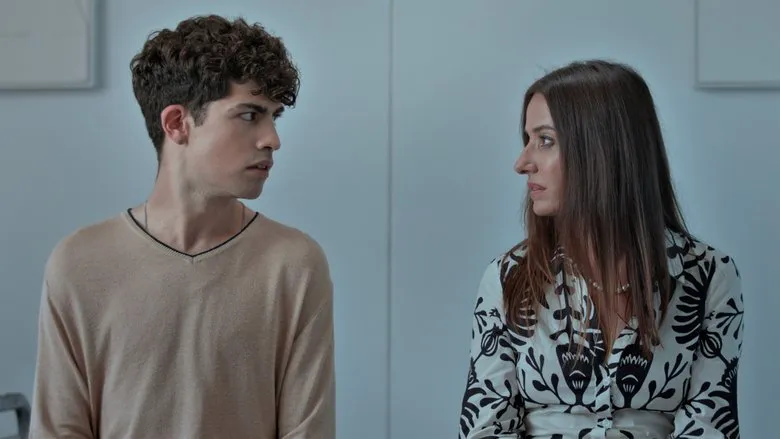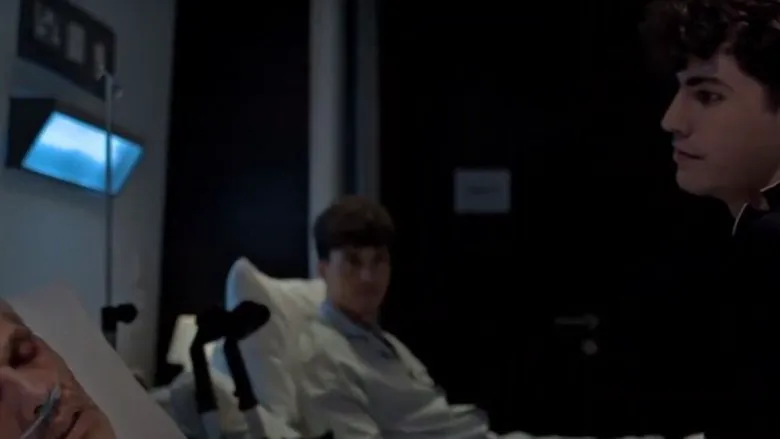Beyond Betrayal: Unpacking the Emotional Depths of ‘Blue for a Boy’
In an era saturated with romantic dramas, “Blue for a Boy” emerges as a poignant and often uncomfortable breath of fresh air, daring to explore the intricate, often messy, landscape of human relationships. More than just a tale of betrayal, this film is a profound journey into empathy, unexpected connection, and the surprising resilience of the human heart. From its audacious premise to its masterful execution, “Blue for a Boy” forces us to confront preconceived notions of love and family.
The Spark of ‘Blue for a Boy’: Anatomy of a Premise
The genesis of “Blue for a Boy” lies in its willingness to tackle a profoundly challenging and sensitive subject: a wife’s discovery of her husband’s infidelity with a male prostitute. This is not merely a sensational plot device; instead, it serves as the catalyst for an emotionally rich narrative. The film’s creators were intent on moving beyond the initial shock to explore the aftermath – the “what next?” that few films dare to address with such nuanced psychological depth.
The core idea evolved from a desire to examine how individuals react when their tightly knit realities unravel. Instead of a predictable revenge narrative, the filmmakers chose a path of introspection and unexpected alliance. This deliberate choice immediately sets “Blue for a Boy” apart, paving the way for a story that challenges traditional cinematic portrayals of infidelity.
Crafting Characters: A Study in Vulnerability
The strength of “Blue for a Boy” lies unequivocally in its three central figures, each painstakingly developed to resonate with authenticity and raw vulnerability.
The Wife’s Journey: Navigating a Labyrinth of Emotions
At the heart of the story is the wife, a character initially presented as having “it all” before her world shatters. Her journey is not simply one of confronting betrayal, but of grappling with a fundamental shift in her understanding of her husband and, by extension, herself. The casting of this role was critical, requiring an actress capable of conveying layered emotions – shock, anger, confusion, and eventually, a surprising depth of empathy. Her decision to meet her husband’s lover, born out of a desperate need for answers, is the linchpin of the film’s emotional architecture, a brave step into the unknown.

The Enigmatic Lover: A Revelation of Humanity
The male prostitute, typically relegated to the fringes of commercial narratives, is given a profound voice in “Blue for a Boy.” The filmmakers deliberately peeled back the layers of societal assumptions to reveal a complex individual driven by deep feelings for the husband. Portraying this character required sensitivity and a commitment to authenticity, ensuring that the audience saw not just a label, but a vulnerable human being capable of profound love and connection, even under the most unusual circumstances. His unexpected bond with the wife forms the beating heart of the film, transforming what could have been an adversarial relationship into one of shared concern and growing understanding.

The Silent Catalyst: The Husband’s Unconscious Presence
Even lying unconscious in the ICU, the husband remains a powerful, central figure. His stroke, an act of cruel fate, completely reshapes the dynamics between the wife and the lover, forcing them to unite in a shared crisis. The deliberate choice to show him physically vulnerable, suspended “between life and death,” masterfully amplifies the tension and vulnerability felt by the two main protagonists, making his presence deeply felt even when he is silent.
Directorial Vision: Weaving the Tapestry of Tension and Intimacy
The direction of “Blue for a Boy” expertly navigates its emotionally charged narrative. The visual language keenly mirrors the emotional states of its characters. The hospital setting, with its sterile beeping and hushed corridors, becomes a character in itself – a confined, melancholic space where raw emotions are laid bare. Director’s notes likely emphasized the stark contrast between the clinical environment and the intensely personal drama unfolding within it.
Subtle camerawork, often employing close-ups, allows the audience to almost physically feel the tension, the unspoken questions, and the burgeoning intimacy between the wife and the lover. The filmmakers were precise in crafting moments of quiet vulnerability, allowing silence and shared glances to convey what words could not. This approach ensures that the audience witnesses the natural, organic evolution of their connection, rather than it feeling forced or contrived. Each directorial choice serves to elevate the emotional authenticity of the narrative, reminding us that love and connection can bloom in the most unpredictable terrains.

The Unspoken Questions: A Deeper Dive into Themes
Ultimately, “Blue for a Boy” is more than just a story; it’s a profound sociological and psychological inquiry. The film doesn’t offer easy answers but poses lingering questions about the nature of love, desire, and the intricate web of human connection. What defines a relationship? Can empathy truly transcend betrayal? How do we reconcile our most deeply held beliefs with unexpected realities?
The film compels viewers to consider love outside conventional parameters, challenging us to look beyond labels and societal norms. It masterfully explores the nuances of desire that led the husband to his choices, and the surprising forms that connection can take. By immersing the audience in this emotional minefield, “Blue for a Boy” invites a deeply personal reflection on our own relationships, desires, and the often uncomfortable choices staring back at us.
“Blue for a Boy” stands as a testament to cinema’s power to provoke thought and foster empathy. It’s a brave, necessary film that stays with you, long after the credits roll, urging you to ponder the complex, often contradictory, but always compelling, nature of the human heart.